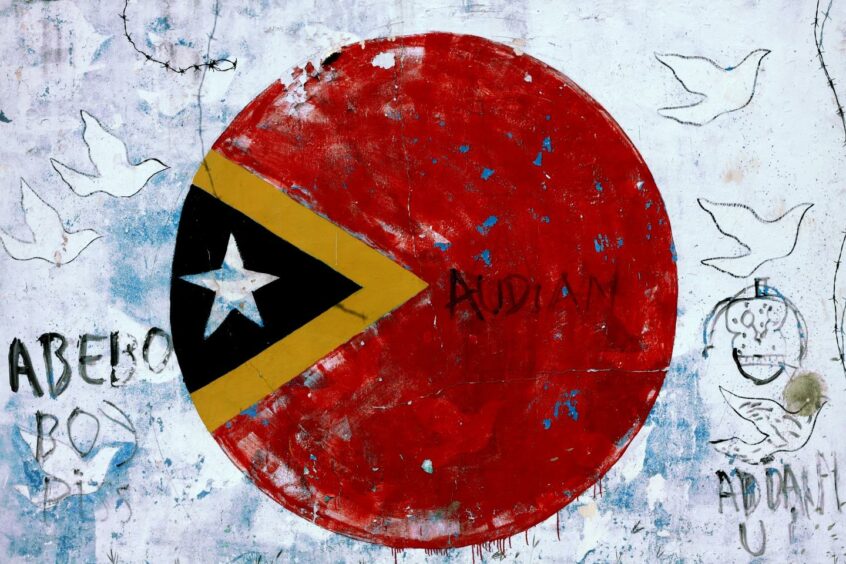
Results from the highly anticipated Buffalo-10 well drilled by Carnarvon Energy (ASX:CVN) and Advance Energy (LON:ADV) offshore East Timor have disappointed. Drilling at the redevelopment project was targeting a potential oil bonanza, which now seems unlikely.
From a technical perspective the results of the Buffalo-10 probe disappointed. “The joint venture will make a decision on the way forward. But it’s fair to say that for Carnarvon, given the other projects that we have, with Dorado and the upcoming drilling of Apus, this is probably the end of the (Buffalo) project for us. We have enough on that’s value accretive for us to be focusing our attention in Western Australia,” Adrian Cook, managing director of Carnarvon Energy, told Energy Voice today.
For Carnarvon, which has a 20% interest in the Santos-operated Dorado field offshore Western Australia, that holds 150 million barrels, it is logical that the company needs to focus its attention there, as well as on upcoming drilling nearby Dorado. “Given that scale, it means the Buffalo project won’t be something we will take forward,” said Cook.
Now it will be up to partner UK-listed Advance Energy to assess its forward plans for the Buffalo project in the coming days, added Cook.
Following a trading halt yesterday, Australian-listed Carnarvon reported that Buffalo-10 intersected the top Elang reservoir at a depth of around 3,338 metres, which was about “80 metres low to prognosis and outside the pre-drill range of expectations.”
“The interpretation from the LWD tools and drilling information is that an approximate 12 metre gross oil column was encountered. Wireline logging results will be used to determine the reservoir properties (porosity, net to gross) and to confirm a net oil column,” said Carnarvon.
Carnarvon and UK-listed Advance Energy were hoping to hit an 80-metre oil column and potential 34 million barrels of remaining oil in the attic area of the Buffalo field.
“The information to date indicates that the seismic processing techniques employed on this project have not resolved the underlying seismic velocity distortion or imaging resolution issues that are present in this field,” said Carnarvon.
Carnarvon said the forward plan was to “prepare the well for and undertake wireline logging operations.”
“We are completing wireline logging today and tomorrow. We will then determine the net oil column,” Cook told Energy Voice.
The Buffalo oil field was originally discovered in 1996 by BHP and produced 20.5 million barrels of light oil between 1999 and 2004. BHP operated the field for two years before selling out to Nexen. Both operators failed to unlock any oil that might be sitting at the geological crest of the field, known as the attic.
Following lots of reprocessing with modern Full Waveform Inversion (FWI) techniques, Carnarvon believed they had identified the crest of the field that holds the missing oil. Reprocessing of the data was carried out by two separate companies – Perth-based DownUnder GeoSolutions (DUG) and CCG.
“This is a disaster in my opinion. I am not sure how they will spin it. They are no further advanced than the previous operator. There is no vast attic accumulation. As I had thought, the (FWI) reprocessing by DUG was not done with proper geological input. The 80m low to prognosis is a terrible result,” one industry expert told Energy Voice.
Simon Molyneux, managing director at Perth-based upstream consultancy Molyneux Advisors, told Energy Voice that “from a technical standpoint, there was a residual risk to this opportunity. Carnarvon (and their partner) had looked at it closely and made the judgement that they had clarified uncertainty and risk. The opportunity was worth drilling.”
“80m low to prognosis means 80m of oil column was not present. Substantial resource volume was not present. It is disappointing from a technical standpoint. Carnarvon will need to make a judgement about whether a commercial project remains, given the on-going technical uncertainty,” he added.
“Historically almost every well in Buffalo was very different to prognosis – a great example for undertaking independent post-well analyses,” said Peter Cockcroft, who worked for BHP between 1995 and 1999, when the field was originally discovered.
Peter Strachan, a Perth-based independent energy analyst, said “the Buffalo field was producing 4,000 BOPD when it was shut down. This result negates any chance that there will be +30 million barrels left. There may be 10 million or 12 million barrels left and that could be a proposition at US$88/barrel oil prices, but for someone else I’d suggest, possibly a group that has access to cheap and mobile production infrastructure.”
The news will also be disappointing for the government of East Timor, which could have pocketed just over $600 million if the Buffalo-10 exploration well was successful.
The Buffalo-10 well was drilled offshore East Timor, also known as Timor Leste, in the TL-SO-T 19-14 PSC in which Carnarvon holds a 50% interest and Advance holds the remaining share.
